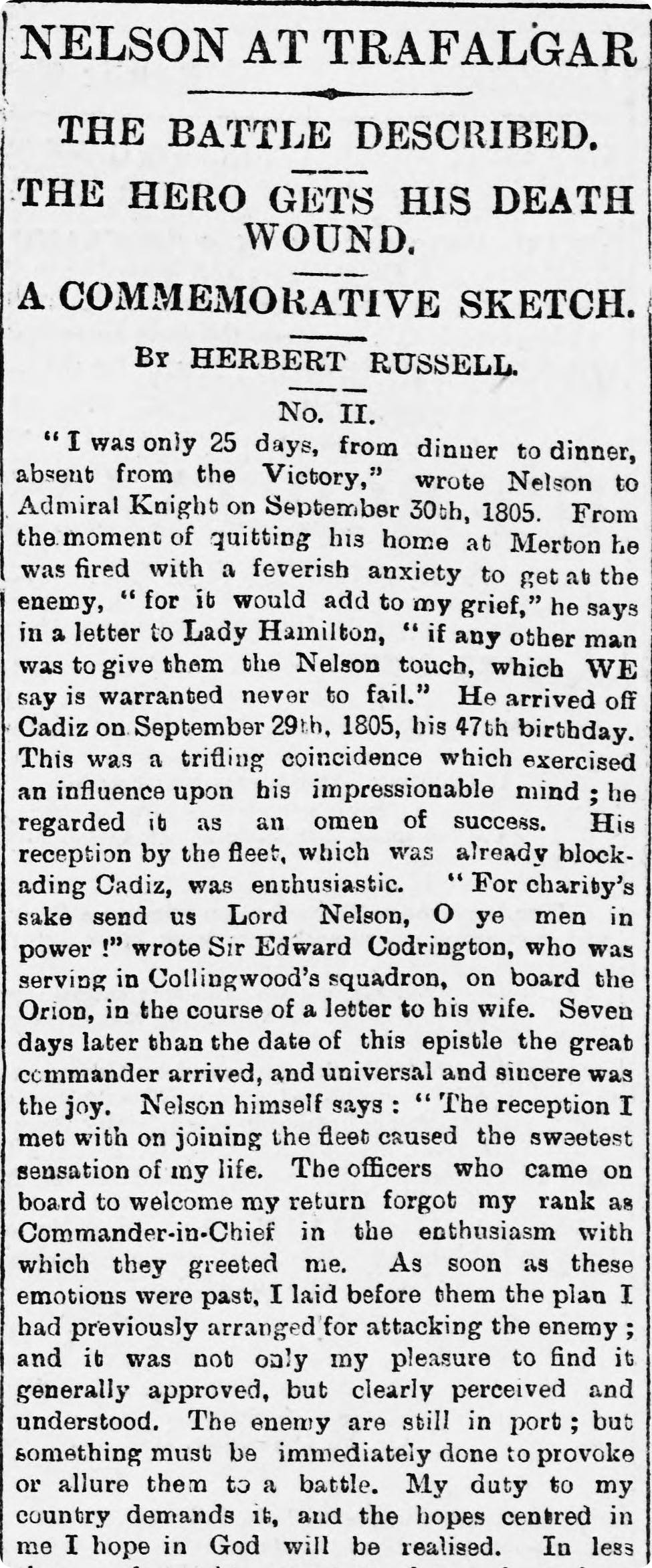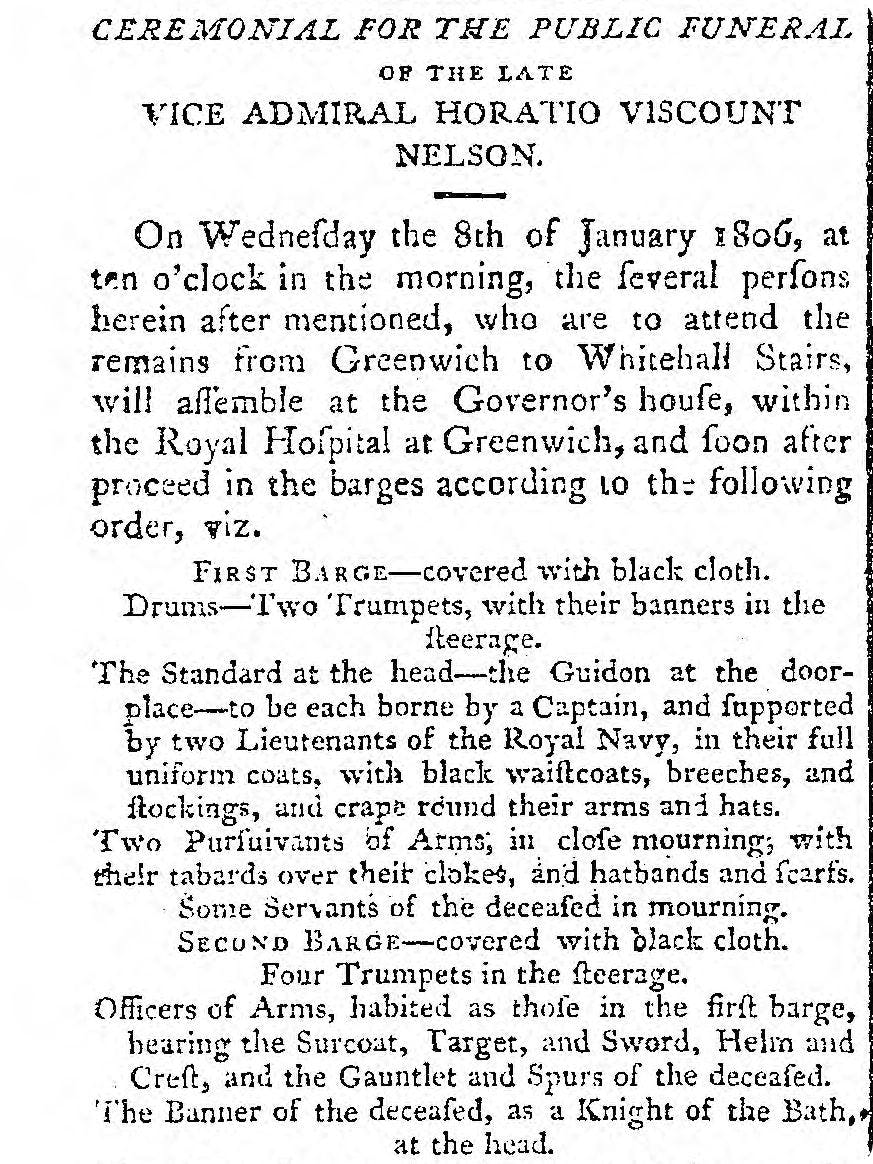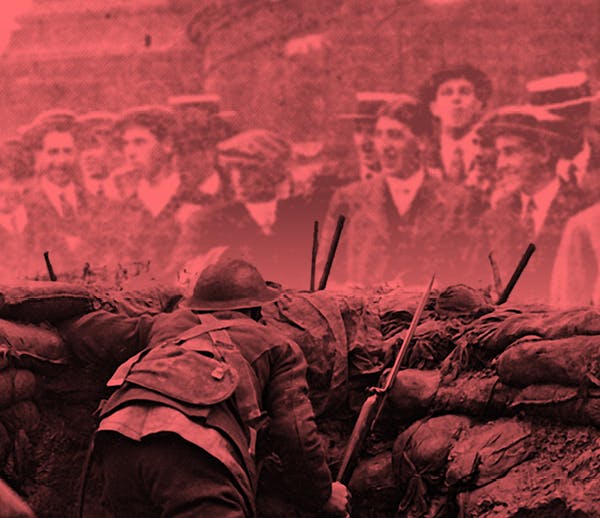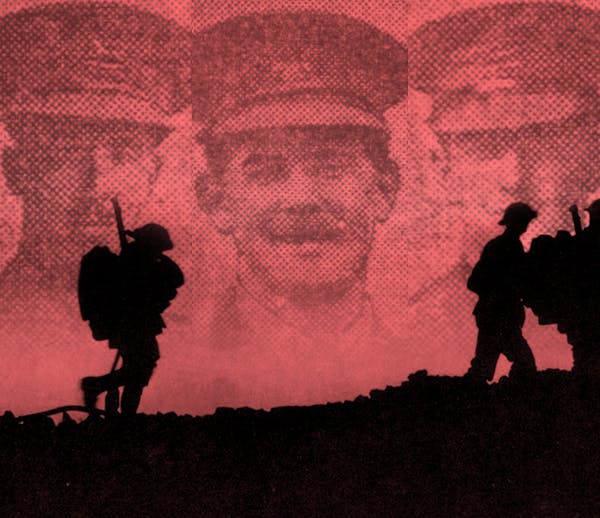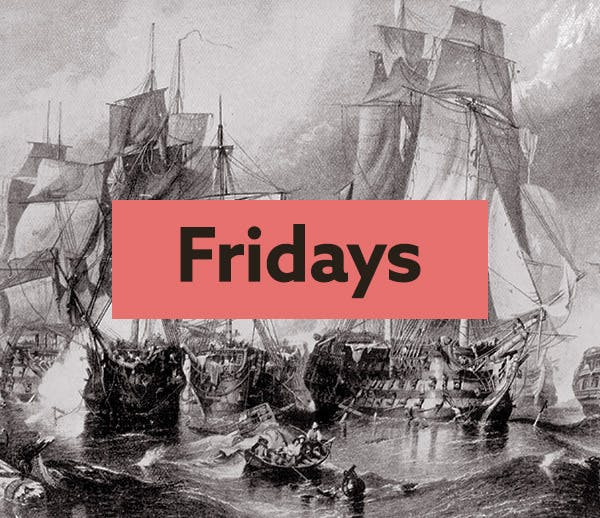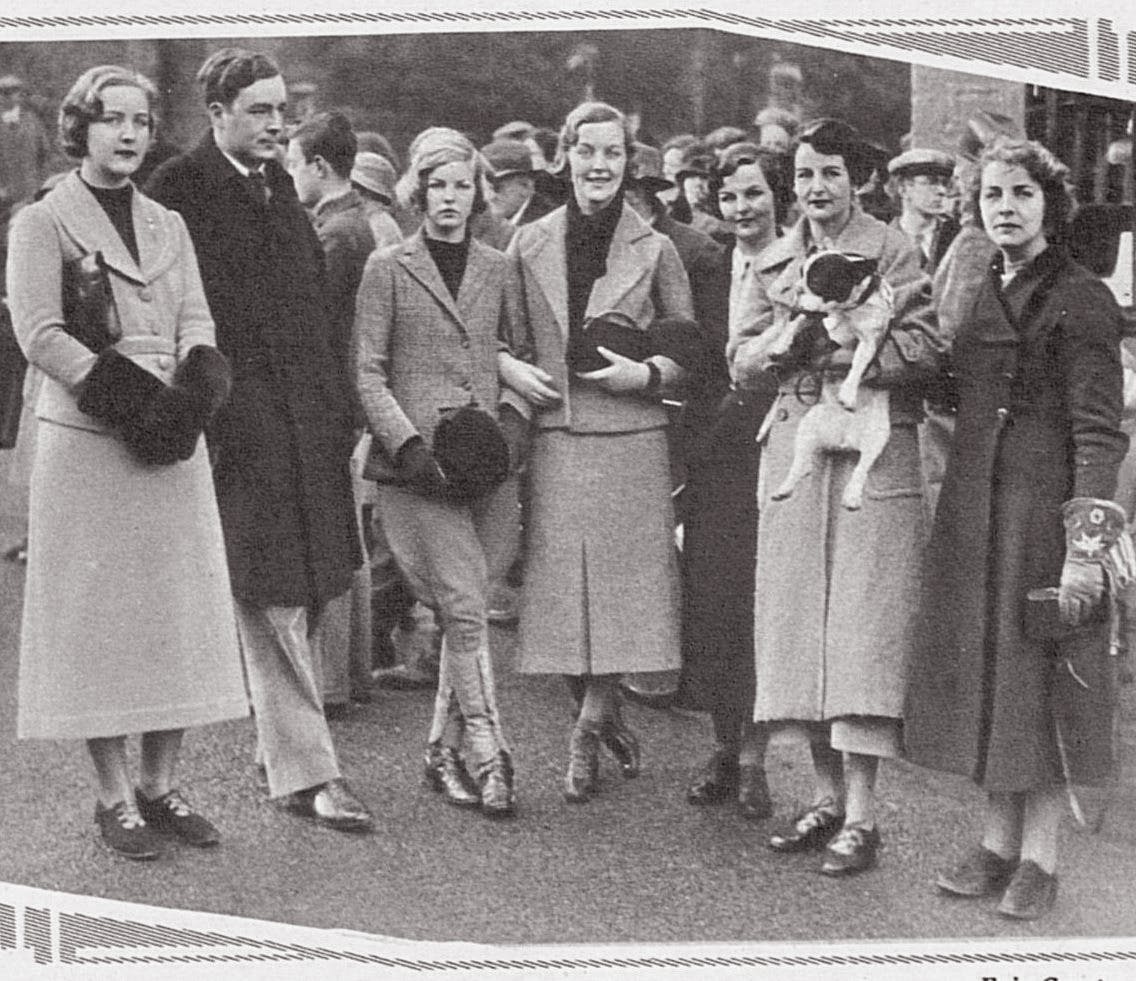The real story of the Battle of Trafalgar
6-7 minute read
By Charlotte Ward Kelly | October 21, 2025
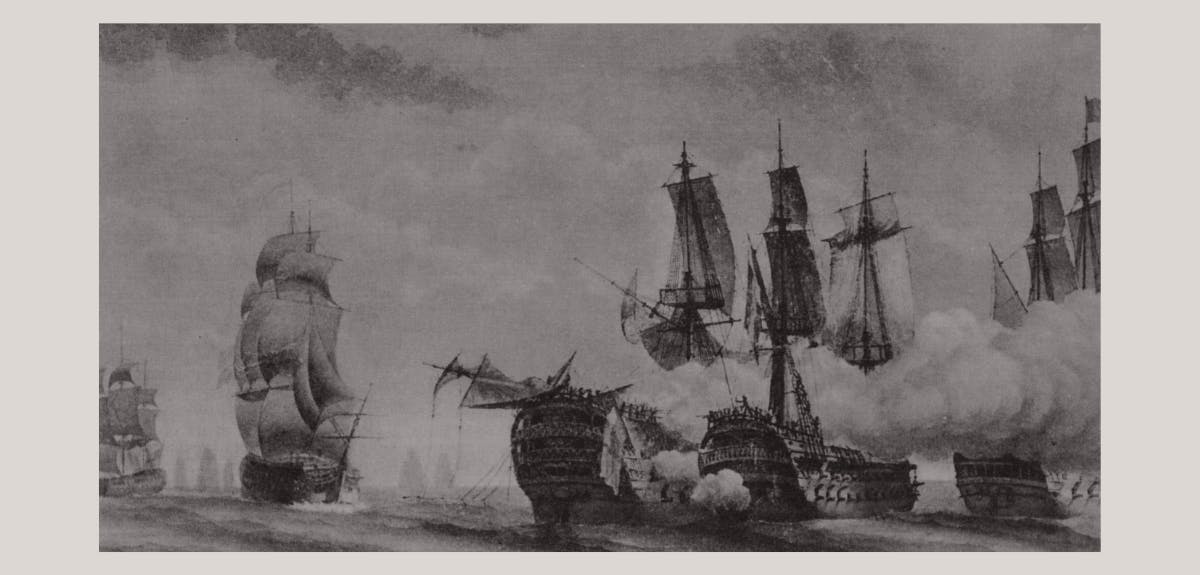
Understand this historic battle in vivid detail, and delve deeper into the naval personnel who participated with the rare and exclusive Royal Navy Trafalgar Prize Book.
At the start of the nineteenth century, Britain and France were locked in a deadly contest for control of Europe. Napoleon Bonaparte’s armies dominated the continent, but Britain’s command of the seas was the one thing standing between him and total power.
Historical background: tensions mounting
At the start of the nineteenth century, Britain and France were locked in a deadly contest for control of Europe. Napoleon Bonaparte’s armies dominated the continent, but Britain’s command of the seas was the one thing standing between him and total power.
In 1805, Napoleon gathered his forces along the Channel coast, ready to invade Britain. To succeed, he needed to control the seas, and that meant destroying the Royal Navy. Across the water, Britain’s fleet kept constant watch, blockading French ports from the Bay of Biscay to the Mediterranean. The two sides played a dangerous waiting game, each trying to outmanoeuvre the other in what was known as the Napoleonic Wars.
By autumn, the French and Spanish fleets, commanded by Admiral Villeneuve, had slipped out of port and gathered off the coast of Cadiz.
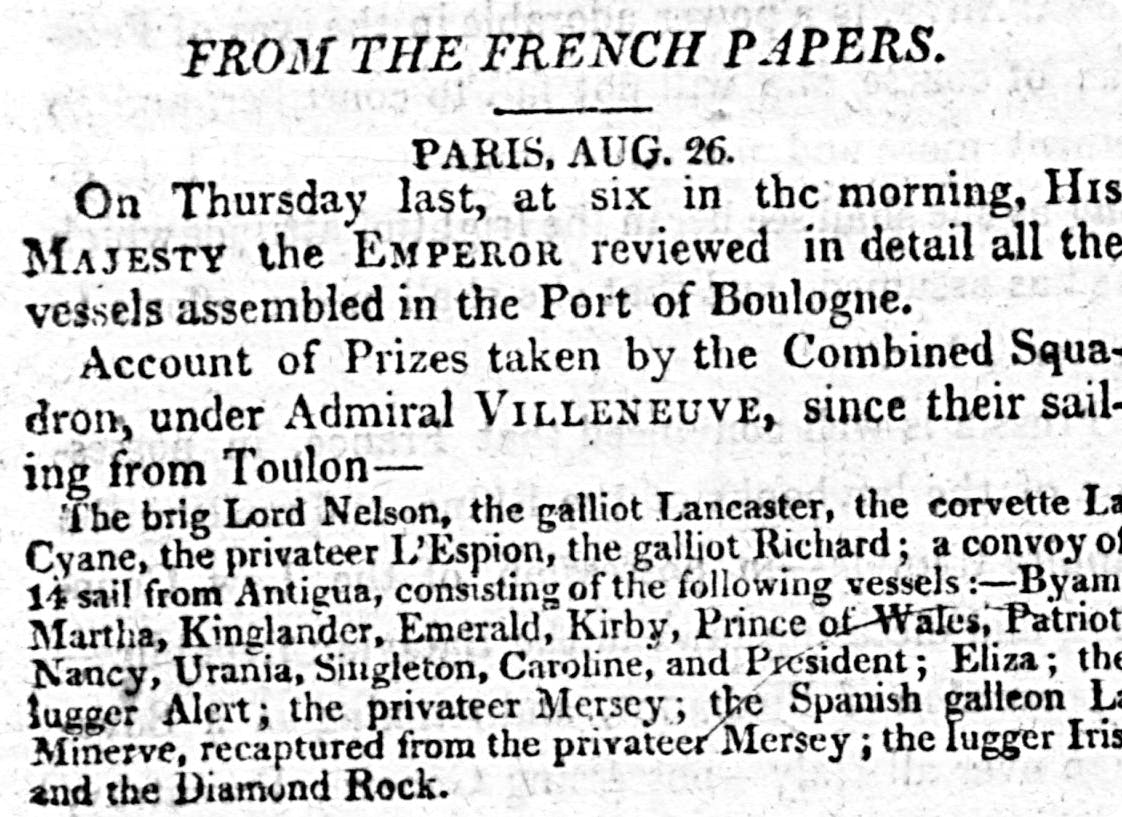
Oracle and the Daily Advertiser, 5 September 1805.
There, on 21 October 1805, Nelson’s fleet, 27 ships strong, finally cornered them. The stage was set for one of the most decisive battles in naval history.
Lord Nelson's battle plan
In an age of rigid naval tactics, Admiral Lord Nelson’s plan at Trafalgar was nothing short of radical. The conventional approach, one fleet sailing parallel to the other, exchanging long-range broadsides, often ended in bloody stalemate. Nelson despised that kind of cautious fighting. He wanted a victory so decisive that it would end the naval war in a single day.
When he gathered his captains aboard Victory before the battle, Nelson laid out his vision on a simple sketch. The combined Franco-Spanish fleet, commanded by Admiral Villeneuve, had formed a long, uneven line across the wind, stretching for miles. Instead of mirroring it, Nelson proposed cutting directly through it. His 27 ships would sail in two columns at right angles to the enemy, smashing through their line, isolating their ships, and forcing brutal, close-range combat where British training and discipline could triumph.
The weather (windward) column, Nelson would lead himself, in HMS Victory. The leeward column, sailing slightly behind, would be commanded by his old friend Vice-Admiral Cuthbert Collingwood in HMS Royal Sovereign.
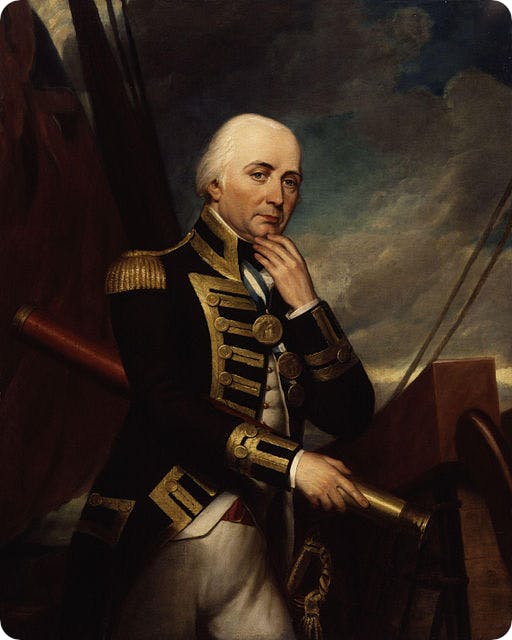
Vice Admiral Cuthbert Collingwood.
It was an extraordinary gamble. For almost an hour, as the British fleet advanced, they would be under heavy fire without being able to return it, their bows offering little protection against broadsides from the enemy line.
How did the combat play out?
Nelson’s fleet of 27 ships was a floating city, full of men and boys from across the world - some as young as twelve. They served in every imaginable role: officers and gunners, marines and cooks, carpenters, sailmakers, and surgeons. Each life was a vital cog in the great machine of war, bound by routine, discipline, and the knowledge that any day could be their last.
By late morning on 21 October 1805, the British ships were closing in on the enemy line under a light wind. The sea was calm, the air thick with tension. Around 11.45 am, as Victory bore down on the centre of the Franco-Spanish fleet, Nelson gave the order for his now-legendary signal to be hoisted.
Moments later, the coloured flags climbed the mizzen mast: 'England expects that every man will do his duty'. The message rippled through the fleet, ship after ship repeating it, until even those out of sight could feel the electricity of the moment. Below decks, the words were shouted from man to man, a chain of resolve linking hundreds of sailors together.
Then came the silence before the storm. Crews braced themselves; guns were run out; the enemy line loomed closer. Around 12.10 pm, Royal Sovereign, Collingwood’s flagship, fired the first broadside, its guns tearing through the Spanish Santa Ana at point-blank range. The noise was deafening, the impact shattering.
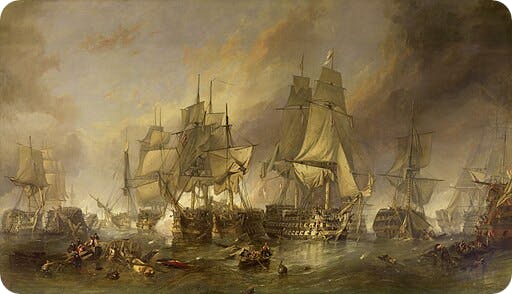
The Battle of Trafalgar, William Clarkson Stanfield.
Within minutes, Victory plunged into the heart of the enemy formation, exchanging brutal broadsides with the French Redoutable and Bucentaure. The air was filled with splinters and smoke so thick that men fought half-blind. Amidst the chaos, stories of extraordinary bravery unfolded - human moments in the storm of war.
Early in the battle, Nelson was shot aboard HMS Victory by a French sniper. He was carried below deck, where Surgeon William Beatty was working tirelessly, performing amputations and dressing wounds as the ship's timbers groaned around him.
21-year-old Midshipman John Pollard, standing in the mizzen-top, is believed to have fired the shot that killed the French sniper who had fatally wounded Nelson. Nearby, Able Seaman Thomas Allen lost both legs to cannon fire yet refused to be taken below until his gun was reloaded. He later became a Greenwich pensioner, one of many who bore Trafalgar’s scars for life.
By 4 pm, the battle was over. Twenty-two enemy ships were captured or destroyed. The sea was strewn with wreckage, smoke, and bodies, a scene of terrible silence after the thunder of the guns. Nelson, mortally wounded, died knowing victory was complete.
The aftermath of battle
Trafalgar was both an ending and a beginning. It crushed Napoleon’s hopes of invading Britain and confirmed the Royal Navy’s supremacy for the next hundred years. Never again during the Napoleonic Wars would France seriously threaten Britain by sea.
News of the victory, and of Nelson’s death, reached London aboard HMS Pickle, commanded by Lieutenant John Lapenotière. The small brig sailed through storms for nine days to deliver the message personally to the Admiralty. The nation plunged into mourning. Nelson’s body was returned to England, preserved in brandy, and buried at St Paul’s Cathedral with full honours.
Beyond the legend were thousands of survivors who returned to quieter battles: healing wounds, finding work, mourning comrades. Some received medals and pensions; others faded back into obscurity. The aftermath of Trafalgar was not just glory; it was grief, hardship, and endurance.
What was the Battle of Trafalgar Prize Book?
Naval prize money was a long-standing system in the Royal Navy that rewarded crews for capturing enemy ships or goods. Once a prize was brought safely to port, it was valued and sold, and the proceeds were divided according to rank, from admirals and captains down to ordinary seamen, marines, and boys. The process could take years, as legal proceedings and sales had to be completed before payment was made.
Prize money was both an incentive and a financial lifeline, offering sailors the chance to earn far more than their regular pay, though many never saw their share due to death, desertion, or bureaucratic delay. These prizes were recorded in documents called prize books.
Who was awarded prize money after the Battle of Trafalgar?
Despite the scale of the victory, many sailors were left disappointed after Trafalgar. Several Franco-Spanish ships were wrecked in the storm that followed the battle, reducing the number of vessels that could be captured and sold. Those that did survive fetched poor prices at auction.
To compensate, the government agreed in 1806 to provide a bounty of £300,000, to be distributed among the fleet according to the traditional system of prize shares, allocated by rank and class. Two volumes of documents record this process: one listing the proceeds from captured ships, and the other showing how the government grant was divided among the crews.
Explore rare Prize Book records on Findmypast
To commemorate the 220th anniversary of the Battle of Trafalgar, Findmypast has digitised one of only two surviving copies of the 1805 Trafalgar Prize Book, in partnership with the National Museum of the Royal Navy. If your ancestor fought in this historic battle, their name may just appear within this valuable resource.
It's never been easier to delve deeper into Britain's proud naval history - simply search the Trafalgar Prize Book by name alongside rank and ship to discover the exact amount each person received, or browse the resource page-by-page for a broader view.
